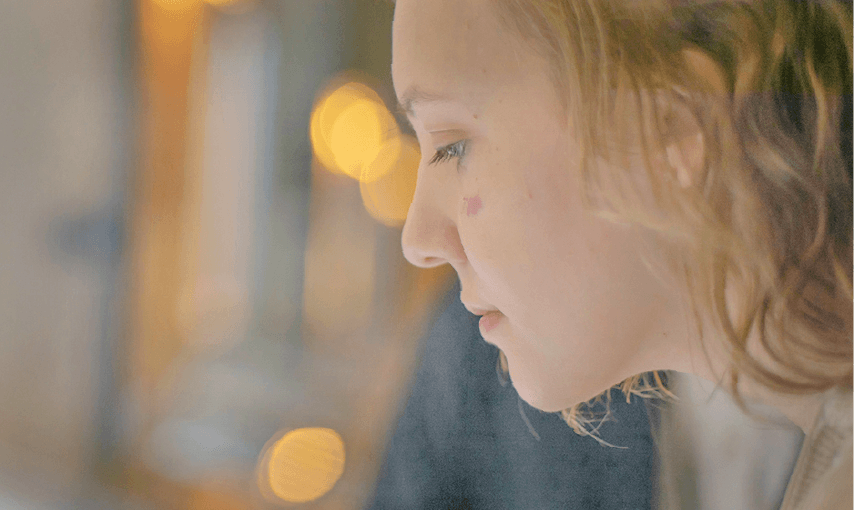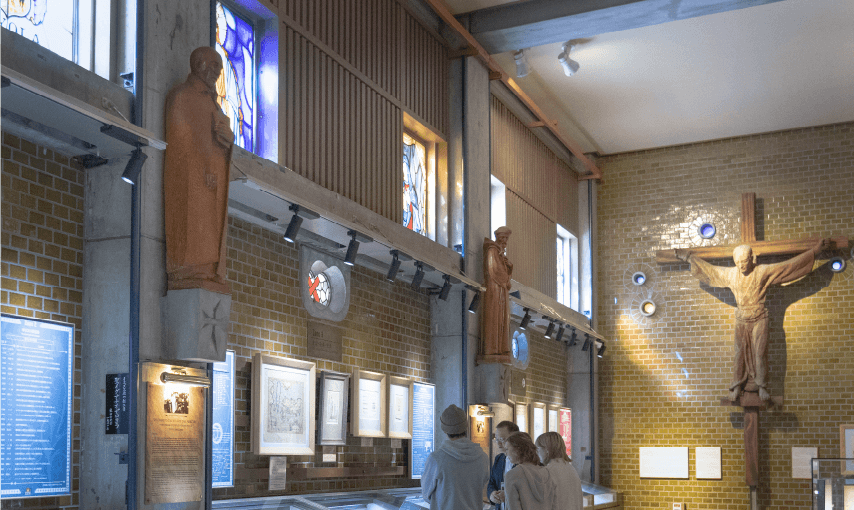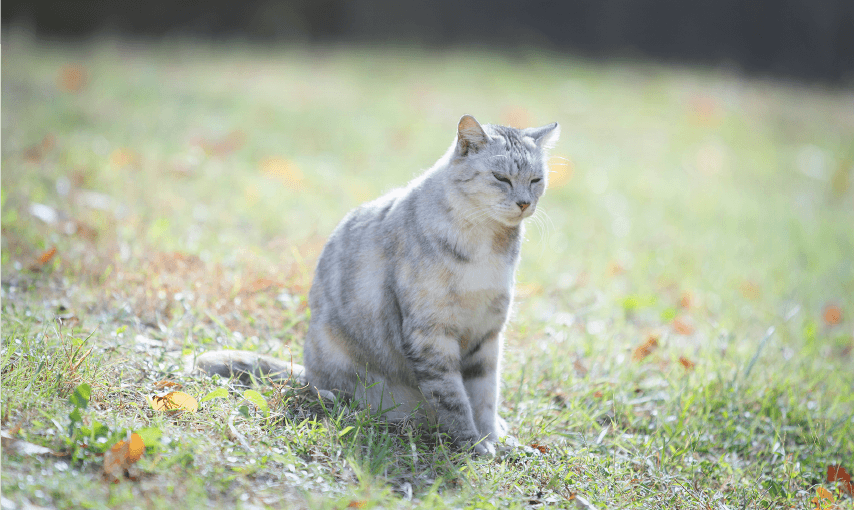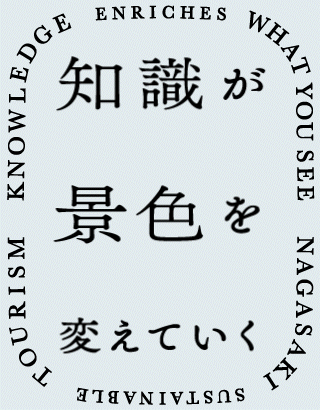



1597: The Day Freedom of Belief Was Lost
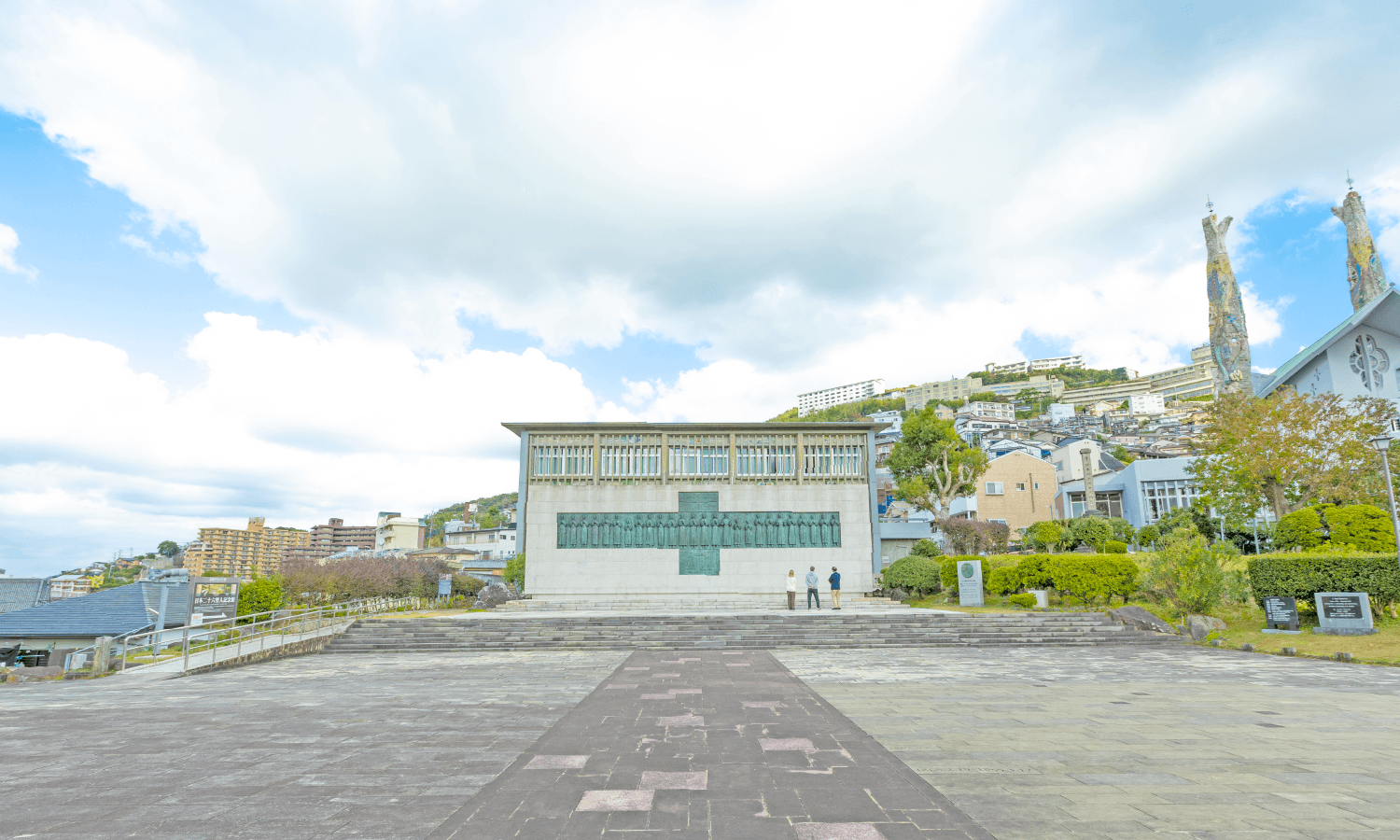
The memorial to the Twenty-Six Martyrs faces out onto the port of Nagasaki
At the start of our journey, we will learn about the 300 years from the spread of Christianity in Nagasaki
to the time when freedom of religion was finally gained.
This is a place where we can learn the background to the historical sites of Sotome・Shitsu that we will later visit.
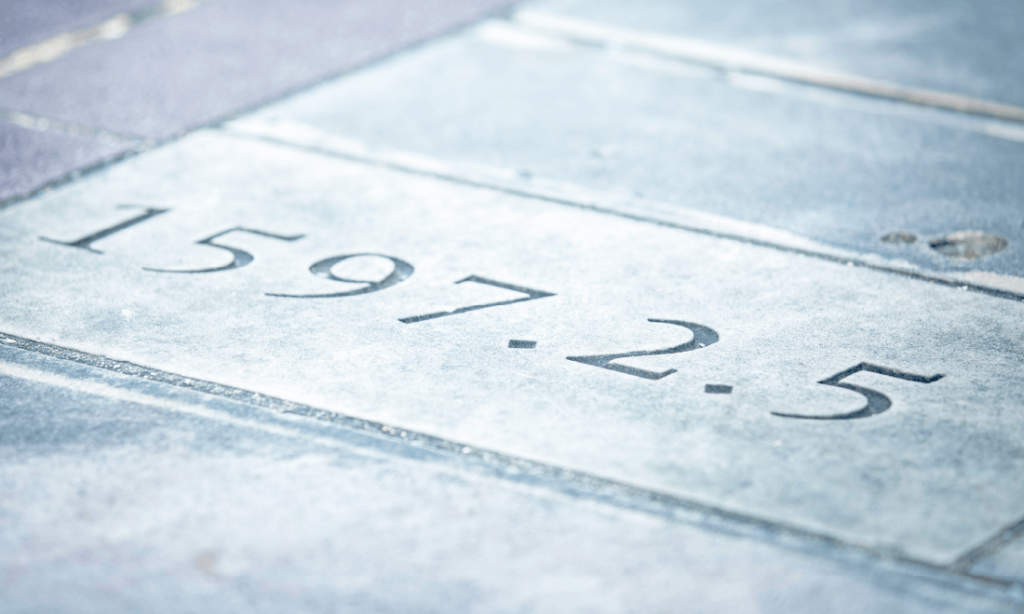
Would the spread of Christianity be the beginning of the eventual colonization of Japan? Fearing this, the ruler of Japan in the late 16th century, Toyotomi Hideyoshi, had twenty-six Christian missionaries active in Kyoto and Osaka including their believers taken prisoner and transported to Nagasaki, which was then the center of evangelism in this country. There the twenty-six became martyrs for their faith. The Twenty-Six Martyrs Museum stands on Nishizaka-no-oka (Nishizaka Hill), the place of their execution. The year was 1597.
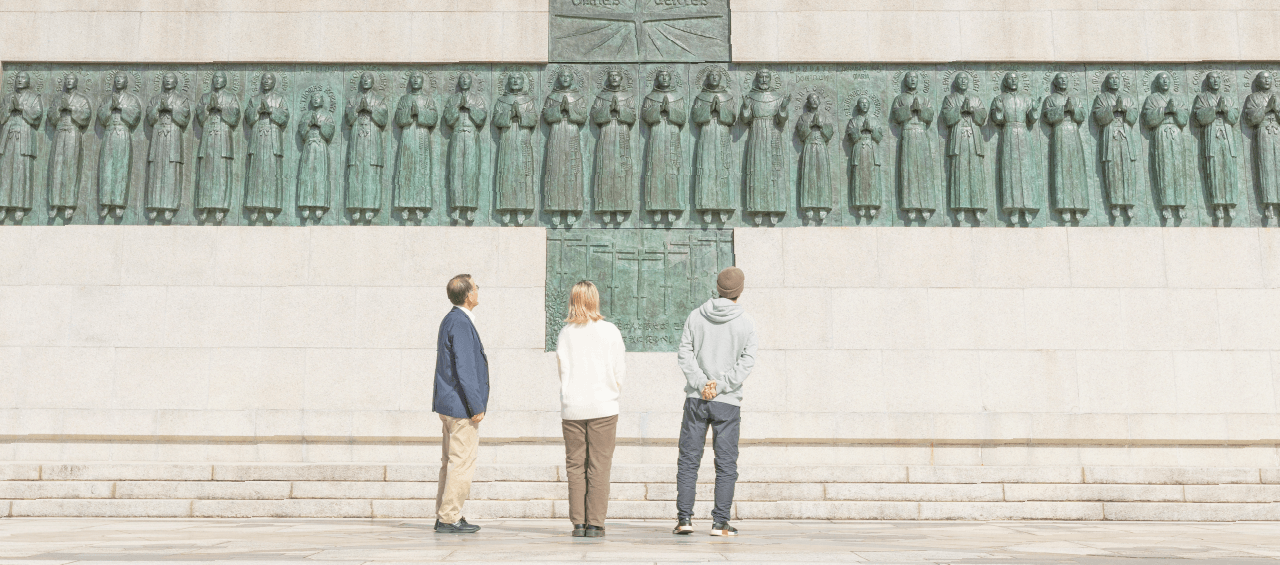
Yasutake Funakoshi, a modern Japanese sculptor, took four years to complete the Monument to the Twenty-Six Martyrs of Japan
The collection includes letters handwritten by Francisco Xavier, who introduced Christianity to Japan, an official noticeboard from the period when Christianity was banned, rosaries and paintings kept by the hidden Christians despite the risk of discovery, images of the Virgin Mary kept hidden in the pillars of houses, and many other precious Christian materials. It includes exhibits of superbly beautiful frescoes by the artist Luke Hasegawa.
As this is a private facility established by the Society of Jesus of Japan, the large collection of precious and culturally significant exhibits is maintained and managed from admission fees and donations.
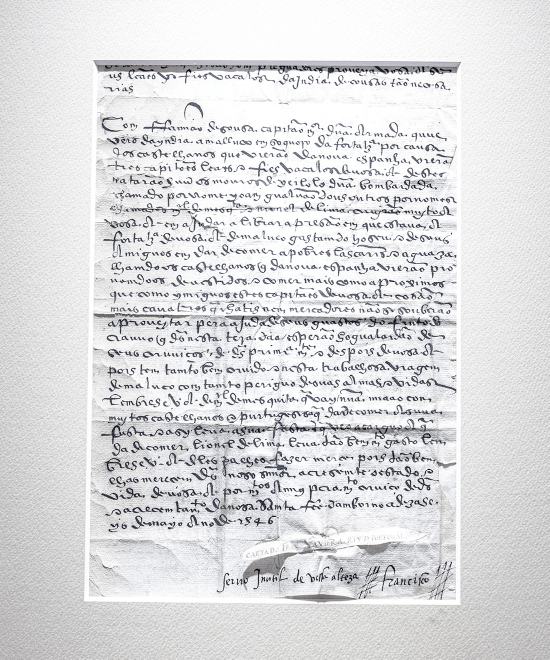
Letter handwritten by Francisco Xavier
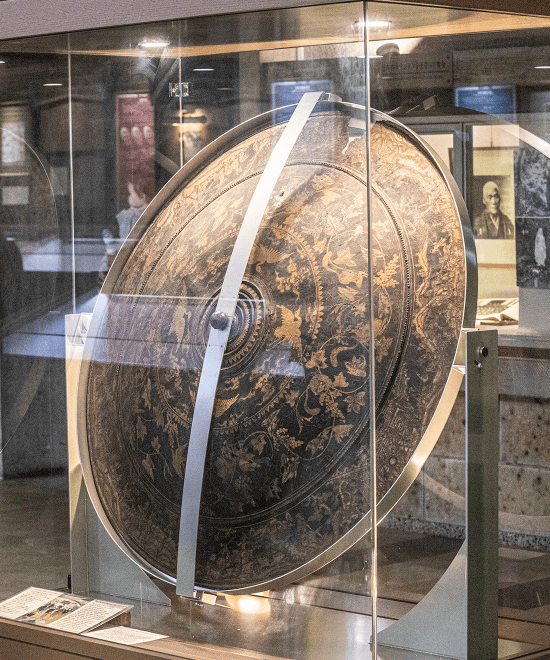
An umbrella brought to Japan in the distant past;
it will be repaired over the next year and a half
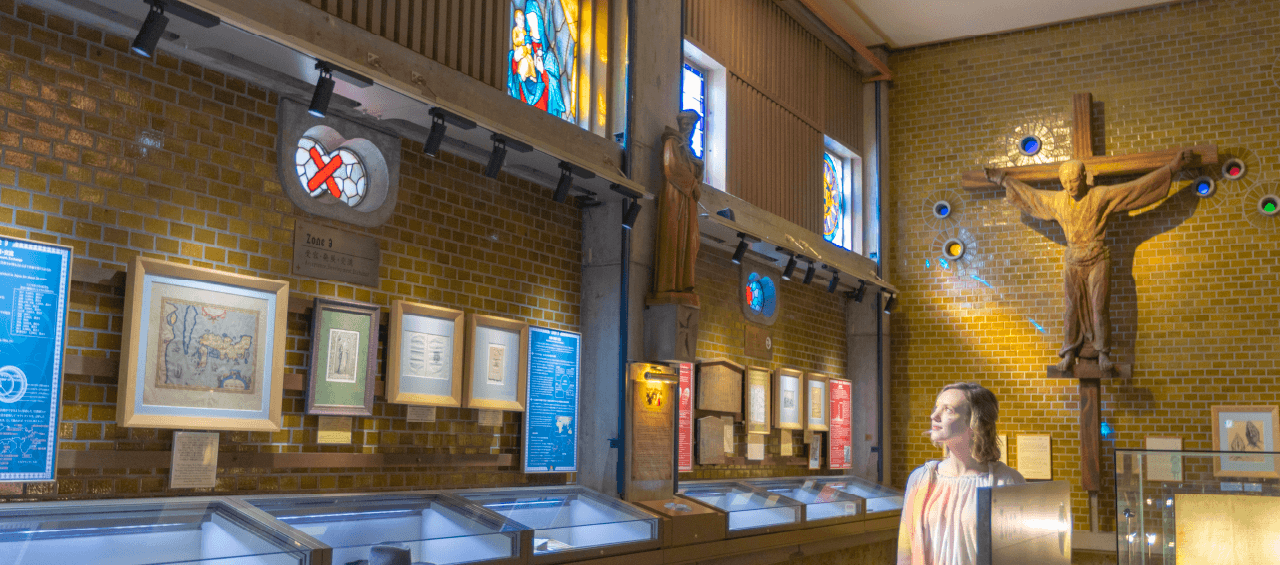
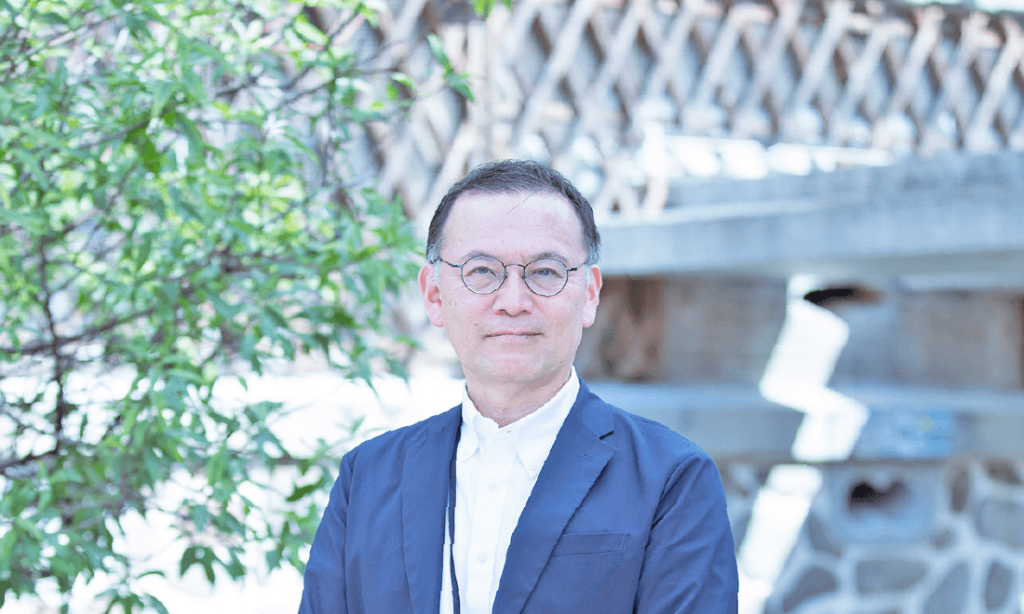
Mr. Miyata can describe each exhibit in perfect English laced with humor, including episodes to highlight the character of each person. His wide-ranging knowledge allows him to immediately answer questions on the spot.

Christian missionary work came to Japan with the arrival in 1549 of the Jesuit Francisco Xavier. Christianity spread in the country as both warlords who wished to gain riches through trade and people touched by the spirit of mercy with desire to help the poor were baptized.
Christianity has a long history stretching over 300 years in Nagasaki, from the Twenty-Six Martyrs who were the first of their kind in Asia, the edicts banning it in the early Edo era, the harsh persecution following the Shimabara Rebellion, the four shogunate crackdowns (kuzure) on Christianity in Urakami, and finally the recognition of freedom of religion through the issuing of the Japanese Constitution of 1889.

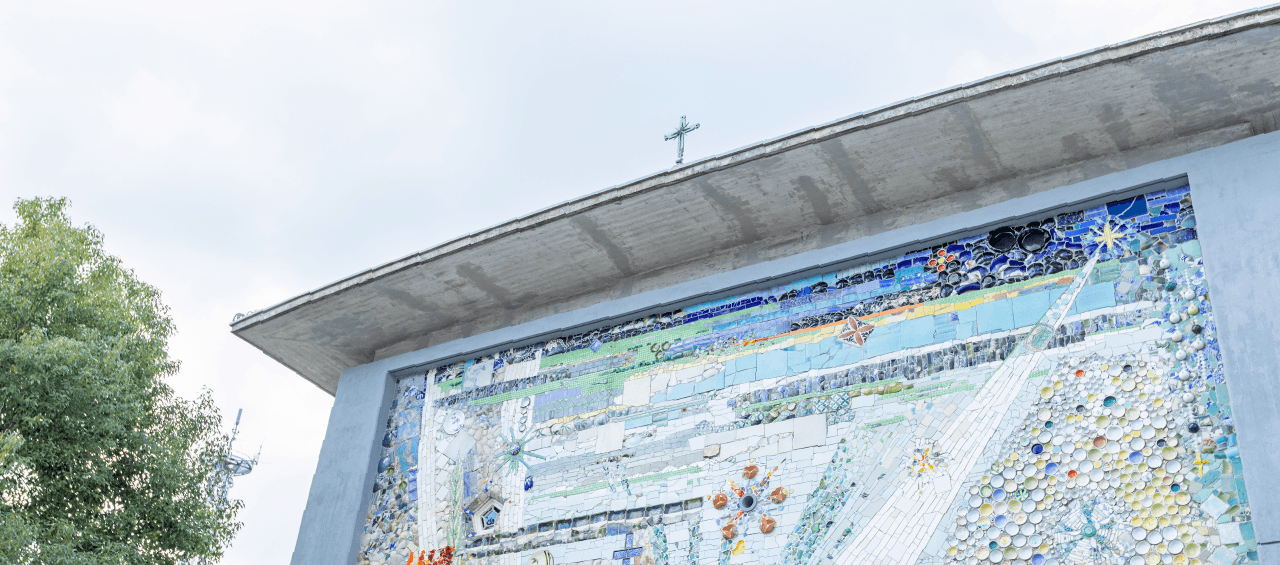
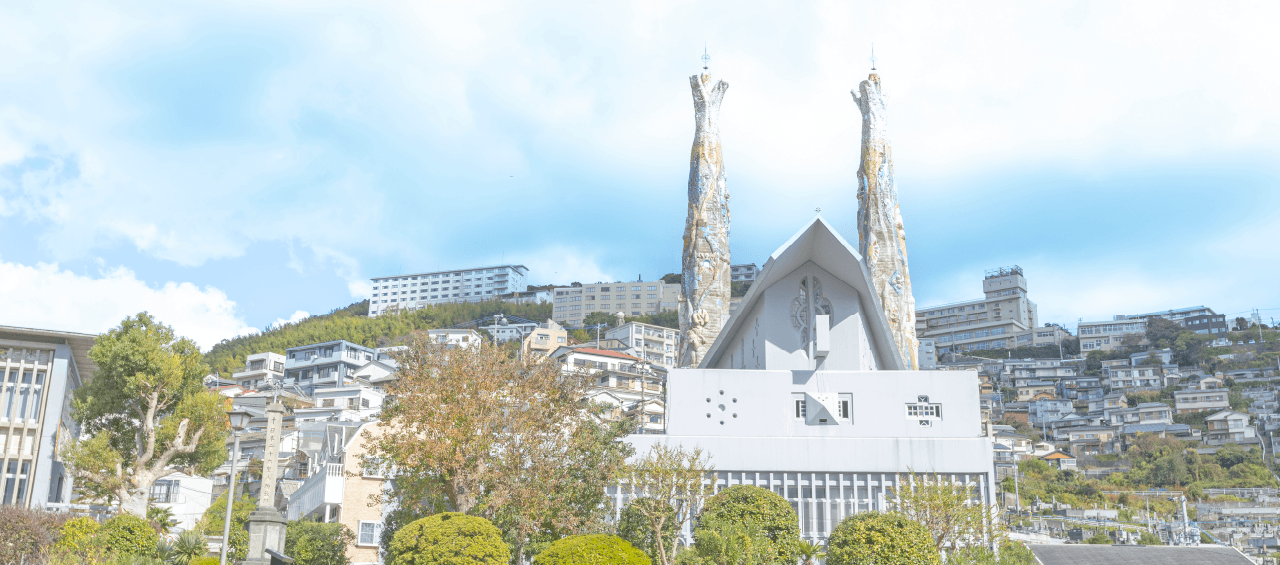
Key points to see are the mosaics and architecture by Kenji Imai, who introduced Gaudi to Japan.
Twenty-Six Martyrs Museum
Address: 7-8 Nishizaka-machi, Nagasaki City, Nagasaki Prefecture
Open 9:00 a.m. to 5:00 p.m.
Parking: 10 spaces are available in the Nishizaka Park parking lot


